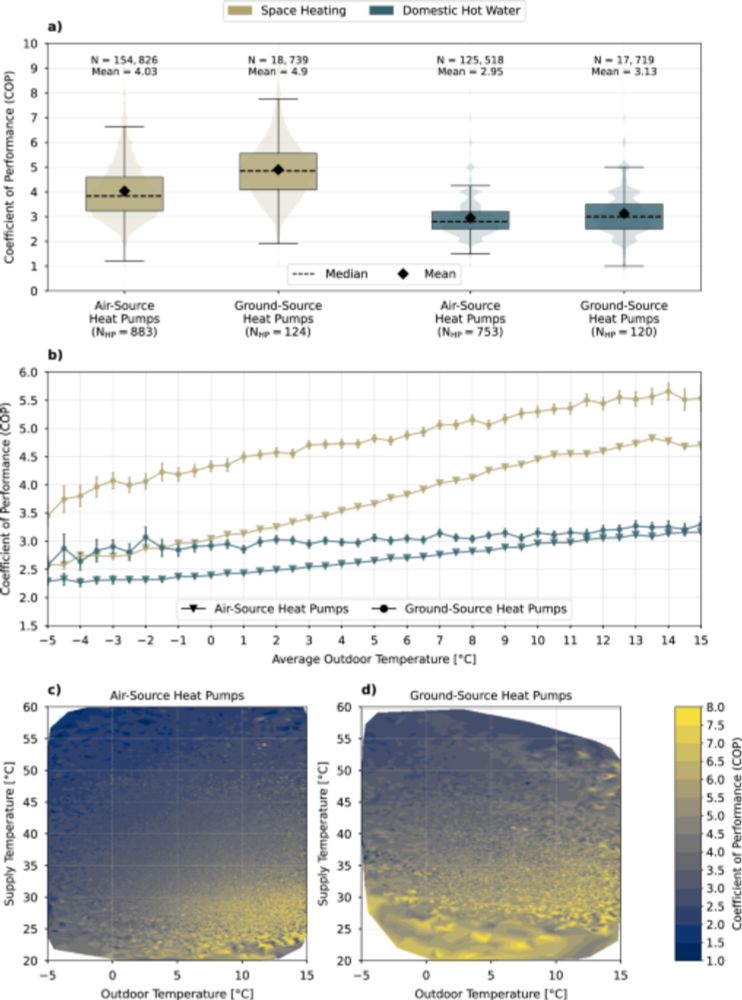
Thoughtful piece by my current favourite podcaster @dwarkesh.bsky.social on where we're at with AI progress and reflections around intelligence itself: substack.com/home/post/p-...
06.12.2025 11:03 — 👍 1 🔁 0 💬 0 📌 0@helloaidank.bsky.social
Data Scientist at Nesta in the Discovery team | Passion for clean energy and all things generative AI | Views are my own. MSc from UvA, PhD in particle physics from UCL.

Thoughtful piece by my current favourite podcaster @dwarkesh.bsky.social on where we're at with AI progress and reflections around intelligence itself: substack.com/home/post/p-...
06.12.2025 11:03 — 👍 1 🔁 0 💬 0 📌 0
Yann LeCun being let go by Meta might have some unexpected benefits 🍿
15.11.2025 17:37 — 👍 6 🔁 0 💬 0 📌 0This may be very old man of me, but I feel like there is something about the bluesky algorithm/my feed that is not sucking me in enough. I know, I know, it's sort of the point but still, I need to have some pull to check out the content and it isn't quite itching that scratch.
04.11.2025 21:49 — 👍 1 🔁 0 💬 0 📌 0
With the AWS outage, now‘s as good a time as any to post this old strip.
20.10.2025 10:18 — 👍 2679 🔁 1057 💬 15 📌 28
Link to the article piece: www.nesta.org.uk/feature/miss...
20.10.2025 11:39 — 👍 1 🔁 0 💬 0 📌 0🏛️ Policy trends:
Electricity price reduction is climbing the policy agenda. Recent debate has centred on long-term ways to bring down prices for households and businesses. That’s key to helping heat pumps compete with gas boilers on running costs. (7/7)
This combined heat pumps, community energy storage, EV car clubs and solar panels to cut bills and upfront costs. (6/7)
20.10.2025 11:39 — 👍 1 🔁 0 💬 1 📌 0🔬 Research funding:
UK research has shifted from optimising heat pumps to green finance, mirroring the investment trend.
Example: Rossendale Borough Council received over £2 million for a place-based decarbonisation demonstrator in terraced streets. (5/7)
IKEA: Meatballs, flat-packs and now heat pumps. The company is now offering heat pumps in several European countries, including the UK since late September, through partnerships with manufacturers such as Aira. (4/7)
20.10.2025 11:39 — 👍 1 🔁 0 💬 1 📌 0💡 Venture funding:
Finance for low-carbon heating is getting a green light from investors. Global investment in 2025 rose sharply for businesses offering loans and financial products to support uptake. (3/7)
In this edition, we looked at innovations to make low-carbon heating more affordable, a key barrier in our mission to decarbonise home heating in the UK. (2/7)
20.10.2025 11:39 — 👍 1 🔁 0 💬 1 📌 0
Mission Radar chart (a type of bubble chart) for Nesta's "A sustainable future" mission, updated Q2 2025. The radar is divided into four quadrants representing categories of innovation: "Ventures and investments" (top right), "Research funding" (bottom right), "Policy" (bottom left), and an unlabeled top-left quadrant (representing trends that are not primarily investment, funding, or policy). A dashed vertical line separates signals in the "Policy" and unlabeled quadrant from those in "Ventures and investments" and "Research funding." Blips are positioned based on time to expected impact, from the center outwards: "0-2 years," "3-5 years," and "5+ years." Blip size indicates potential impact on home decarbonisation, with larger blips signifying greater expected impact and smaller blips signifying smaller or more niche impact. Main Trends and Findings (Blips): Venture and Investment (High Impact, Short/Medium Term): Ikea heat pumps (Small, 0-2 years) Digital platform for local installers (Medium, 0-2 years) Energy-as-a-service (Small, 0-2 years) Retail investment in green finance ventures (Medium, 3-5 years) Research Funding (Medium Impact, Short/Medium Term): Turbo air-source heat pump (Medium, 0-2 years) Net zero terrace streets (Medium, 3-5 years) Community operated energy infrastructure (Small, 3-5 years) Policy (Medium/High Impact, Short Term): Increased government publications on electricity prices (Medium, 0-2 years) Increased references to electricity prices in debates (Small, 0-2 years) Top-Left Quadrant (High Impact, Medium Term): One large, dark blip is visible in the 3-5 years range. Source: Nesta's analysis of innovation trends. Companies and research projects included are those identified in Q2 2025. Blip size and positioning determined by expert judgement.
Happy to share my first piece of analysis work with the Discovery team at @nestauk.bsky.social on 𝗠𝗶𝘀𝘀𝗶𝗼𝗻 𝗥𝗮𝗱𝗮𝗿!
The Mission Radar is a briefing series on innovation signals and emerging trends in Nesta’s missions. We use AI to scan for innovation across business, academia and policy. (1/7)

What a really interesting conversation between two of my favourite people in AI in the form of @karpathy.bsky.social and @dwarkesh.bsky.social. I wish more ppl in this space took the same approach in terms of being open to debate, challenge and overall being humble.
www.youtube.com/watch?v=lXUZ...

The author doesn't really address the wider implications of deterministic LLMs, but can imagine the reproducibility of outputs could be very powerful in terms of trust.
Link to the blog: thinkingmachines.ai/blog/defeati...
(6/6)
Used ChatGPT in study and think mode as well as prompting it to use socratic questioning to really improve my understanding of this area. (5/6)
05.10.2025 15:24 — 👍 0 🔁 0 💬 1 📌 0They've managed to create deterministic LLMs at inference time with some penalties for efficiency, but the results are pretty cool. I found their blog quite a long read, as I had little familiarity around the intricacies of these calculations and how they relate to GPUs. (4/6)
05.10.2025 15:24 — 👍 0 🔁 0 💬 1 📌 0However there are different strategies to get around this, e.g. running sums over single cores in a GPU. This is what 'Thinking Machines' have been doing with implementing batch-invariant calculations for LLMs. (3/6)
05.10.2025 15:24 — 👍 0 🔁 0 💬 1 📌 0This is caused by something called floating point non-associativity. In Maths, we can do (a+b)+c =a+(b+c) but this is not the case when doing calculations in computers, the order matters. (2/6)
05.10.2025 15:24 — 👍 0 🔁 0 💬 1 📌 0So theoretically LLMs can be deterministic if we set their temperature to zero, but in practice they aren't. This comes down to how we do calculations such as matrix multiplication at inference time. It turns out the order you do these calculations in does matter. (1/6)
05.10.2025 15:24 — 👍 0 🔁 0 💬 1 📌 0Does anyone have cool (or boring) agentic use-cases that they've read about or used?
Doing some horizon scanning work to see what's out there but thought my bluesky network might have ideas!

That's what we are building with Nesta's Policy Atlas tool!
Read about our alpha tool user testing and what's next for the project, here: www.nesta.org.uk/project-upda... (2/2)
What if there was an AI-powered tool that allowed policymakers to rapidly identify the most effective policies to tackle any given social challenge, based on the latest evidence? (1/2)
12.09.2025 10:49 — 👍 1 🔁 0 💬 1 📌 0This was a fun ML problem to tackle, underlined some of the data quality issues with EPCs (92% of the storey count field was missing) 😅.
Think the conclusion around the distinct heating strategies needed for areas with different rise types is definitely a salient one!
Favourite feature from the GPT-5 release is being able to quickly spin out different UIs (which can be previewed), make easy edits without needing to manually edit JS code myself. It's pretty good at instruction following now too!
29.08.2025 14:42 — 👍 0 🔁 0 💬 0 📌 0
Some Friday evening listening a l'italiano 🇮🇹: www.youtube.com/watch?v=rL1s...
22.08.2025 16:14 — 👍 0 🔁 0 💬 0 📌 0OpenAIs graphs against humanity for their release of GPT-5 is just *chefs kiss*. We've achieved PhD level intelligence but watch us make graphs where 50 < 47
07.08.2025 21:31 — 👍 3 🔁 0 💬 0 📌 0What a ridiculous state of affairs. Terence Tao one of the greatest mathematicians of his generation getting his grants suspended 💩
04.08.2025 10:57 — 👍 0 🔁 0 💬 0 📌 0Brilliant news and about time!
10.06.2025 21:19 — 👍 7 🔁 0 💬 1 📌 0
Listened to the "build a career in data science" whilst making the transition from academia to data science. Found it an extremely useful resource and would recommend to anyone starting out on their journey. Even now I've been relistening and still v relevant: open.spotify.com/show/78Nft51...
09.06.2025 21:32 — 👍 0 🔁 0 💬 0 📌 0
Plot taken from this paper: www.nature.com/articles/s41... (2/2)
27.05.2025 15:21 — 👍 1 🔁 0 💬 0 📌 0